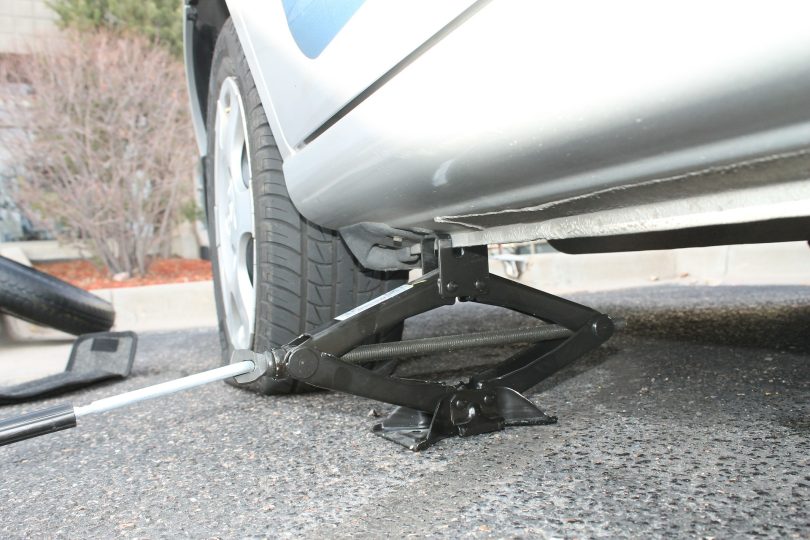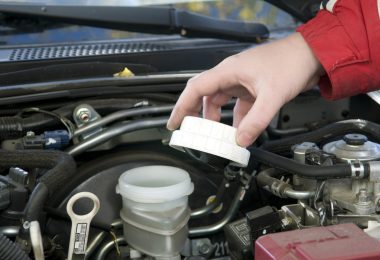So many accidents have happened today as a result of improper use of jack. Sometimes not knowing the right place to put the jack. This accident has caused so much money for treatment, even perhaps cause deformation. Therefore, we want to use this opportunity to bring to you how to use jack so as to avoid further occurrence of any accidents. Jack is car instrument use in lifting vehicle up for different purposes. We need to take up a safety way of jacking.
Safety Way of Jacking a Car
It is important you be careful while you want to jack your car. Try to place your car jack on iron like body of the car under. Some car under where you place your jack is rotten or decayed; such can cause an accident if not well managed. Never climb underneath a car or truck when it’s supported only by a car jack. The jack can easily slip off from under the vehicle or fail, bringing thousands of pounds of weight down on top of you without warning. In other words, if you’re going to crawl under the vehicle, first purchase a high-quality set of jack stands. At just $35 they are worth the investment. Do not use boxes, cinder blocks, or bricks as a makeshift substitute.
If you’re changing a tire, you will not have to crawl under the vehicle, so jack stands are not necessary, but they’re easy to use and they’re always a good safety precaution.
Before you jack up any car, make sure it is on solid, level ground. Never use a car jack on dirt grass, or sandy place. This is to avoid sinking the jack which will cause accident. Also, the transmission should be in park and the parking brake engaged. If the car has a manual transmission, leave it in first gear. As an added measure of safety, chocking a tire with a wooden block is always a good last-resort idea. This will make sure the car will not attempt to roll away. If you’re lifting the front of the car, chock a back tire. If you’re lifting the rear, chock a front tire.
And finally, never jack up a car on the shoulder of a busy road, especially a busy freeway, interstate, or other major highway. It’s extremely dangerous, and many people are killed or severely injured every year making this mistake. If you get a flat, slow down and pull to the shoulder, but don’t stop. Put on your hazard lights and keep driving slowly to the next exit, where you’ll find a more secure place to jack up your car and install your spare tire safely. Yes, driving on the flat tire may damage your wheel; however, it’s a small price to pay in the interest of safety.
First Measure
If you’re going to lift your car with the manufacturer-supplied car jack, check the owner’s manual for the proper placement of the jack underneath the vehicle, which is probably on the “pinch weld” located between the front and rear tires. If you place the jack incorrectly you can damage the vehicle, and will also slide off the jack, which is (as discussed) dangerous. If you’re jacking up a vehicle with a store-bought hydraulic floor jack be sure to place it on a frame rail or some other sturdy structure of the vehicle’s undercarriage between the front and rear tires and away from fuel lines and other fragile parts. But before this make you pack your car on level ground. If you don’t, it could roll or slip off the jack. It’s also best to park it on a hard level surface, like tarmac, instead of on grass or on a dirt road. Then put on you caution sign triangle as a safety measure to alert others.
Second Measure
For this second measure, it is vital you ensure that you straighten the steering wheel, put the car in park or in first gear if you have a manual transmission; never in neutral, and firmly engage the parking brake. This keeps it from moving unexpectedly when you’re under it. Then, you have the jack placed properly, with the vehicle on the flat ground and at least one wheel chocked; you’re ready to lift the car. If you’re using a scissor jack, insert the rod, or place the wrench over the knob and begin to crank to the right. It should slowly rise and engage with the vehicle, which will add some resistance. Keep going. At first the car will rise up on its suspension, however, it will eventually top out and the tire will come off the ground.
A hydraulic jack operates differently and will raise the vehicle more quickly, but it will require more space. To lift the car with a hydraulic floor jack, pump the long handle up and down until you’ve reached the required height. It should only take between three and 10 pumps depending on the jack used. Don’t lift the car any higher than you need to. Lifting the tire a few inches off the ground is sufficient to remove the wheel and change a flat or check the brakes or suspension.
Third Measure
Every car has a suitable position for jacking; there are specific spots where a jack plate is welded to the body. This is where the jack needs to go, because not every spot under a car is load-bearing. You can find this information in your owner’s manual, or online. Jack points are normally behind the front wheels and in front of the rear wheels. Place your jack stands under the vehicle near the placement of the jack and lower the car until it is securely resting on the jack stands. If you’re using a scissor jack, simply turn the rod or wrench in the other direction (to the left) to lower the vehicle. To drop the car with a hydraulic jack, twist the long handle to the left. But do so carefully. It’s very easy to turn the handle too quickly and lower the car faster than you want to.
Fourth Measure
Positioning of jack is very important. Jack should be place in an appropriate spot. It is also vital that you place pieces of wood on the jack plate to wedge in between the car’s jack point and the jack itself. Then, give it a little wiggle to make sure it is secure and balanced. This minimizes the risk of damaging the vehicle.
Fifth Measure
If you’re using a traditional floor jack, make sure the release valve is closed, which is typically done by rotating the main lever clockwise. Then, start raising the jack until it’s in contact with the iron part of the car going up in the air and check that nothing has moved before you go further. Keep an eye on how it comes in contact with the iron body of the car.
Sixth Measure
Watch how the car moves as you jack it up and stop immediately if it’s tilting to one side. If everything checks out, raise it high enough so that you have enough space to work. You don’t want your rib cage rubbing against the oil pan, but you also don’t need it eight and a half feet off the ground to change a fuel filter.
Seventh Measure
We advise you use extra jack stands. The whole reason you are using a car jack is to lift the car up. Unless you’re switching out the wheel, we highly advise against using the jack as an anchor. Use the jack stands to secure the vehicle in its position. Make sure to put the jack stands in the correct place before you crank up the jack and allow your car to put its weight down on them.
Read Also :Common Mistake That Can Blow Off Car Brain Box
Eight Measure
Lower your car back down. It’s critical to disassemble your jack stands before you start to lower your car. You cannot overlook this step, as it can be dangerous if ignored. If you are replacing a wheel, make sure to put it back on with the lug nuts you tightened with your hands. After the tires have made contact with the ground, you can finish tightening them to full capacity using a wrench. Once you’re done, go back to fifth measure and perform it in backward order. If you’re using a standard jack, you’ll need to use a counterclockwise motion to open the release valve. If you’re using a scissor jack, you’ll need to crank in a counterclockwise motion. In all cases, it’s crucial to perform these actions slowly and carefully.
Do not remove the floor jack until your tires hit the ground and your car is in a comfortable position. Now that you know how to use your jack, you’re prepared to take on any jack-requiring situation that comes your way to perform this task in safe manner.
We Have Different Types of Jacks
Mechanical Jack
Mechanical Jacks, as the name suggests, makes use of pure mechanical methods to lift the car. These kinds of car jacks may involve using a screw to raise or a ratcheting system to lift the vehicle slowly.
Mechanical Jack examples include the scissor jack and high lift jack – which we will be discussing in detail.
Hydraulic Jacks
Hydraulic Jack makes use of a horizontally or vertically positioned hydraulic cylinder to lift large objects. The hydraulic system makes use of the fact that liquids don’t compress easily. Hydraulic Jacks have a reservoir full of oil, where the pressure pushes the cylinder up. Once the oil flows back into the reservoir, the jack will compress.
Hydraulic Bottle Jack
Bottle Jacks are one of the most common and versatile kinds available on the market. To operate, you need to pump the handle up and down, and the hydraulic bottle jack lifts the heaviest vehicle without much effort.
These are fairly compact and available in various lift capacities ranging from 2-12 tons (ideal for vehicles) to jumbo sizes(20+ tons) and even 100 tons. Its modest size makes it very convenient for garage storage, and its simplicity of usage allows even the most novice car owners to use it.
Scissors Car Jack
Scissor Jack is probably what you have in your garage if you have never upgraded the tools. It is the most common and oldest style of car jacks and resembles the make of scissor arms. They mostly come along with the cars and spare tyre. Make sure you check your trunk before going out to buy a new one. Using the screw that connects the two sides, you can either open or close the joints that raise or lower the saddle. Apart from being extremely simple to use, scissor jacks take up a minor space in your garage and are incredibly lightweight and portable.
Unlike the hydraulic jacks, there is no worry of fluid leakage, replacement, and they demand minimal maintenance.
Floor Car Jack
You have probably seen a floor jack in car movies or shows, where they bring out a device with wheels and conveniently place it in position. It has long arms that make it easy to be moved around. Once placed underneath the vehicle, the long handle makes it easy to lift and lower swiftly.
Floor Jack and Trolley Jack are pretty similar, with the major difference being in their lifting capacities. Trolley Jacks are more suited for low-profile minimum height vehicles like sport and luxury cars. On the other hand, there might be some differences in the construction and internal components. For example, Floor jacks are more portable and lightweight, whereas a trolley jack is constructed with steel and release spring.
A Jack with wheels is probably one of the coolest devices you can have in the garage, and they make lifting the cars a handy task. No stooping down and breaking your back.
High Lift Jack
High Lift Jack is not designed for every vehicle and everyday use. It is only when you need the maximum lift, especially for off-roaders and trailer owners. They are not something you find in every garage.
A word of caution; high lift jacks have a tiny footplate that makes them very unsteady. To avoid any incidents, make sure you use the high lift jack with complete care and caution, or let someone professional handle it. To put it simply, you don’t need a high lift car jack if you are not an off-roader.
Before we move on to carjack use, let’s clear the confusion between Hi-Lift and High Lift Jacks. Hi-Lift is a brand of high-lift jack, not another type of car jack. All Hi-Lift jacks are high-lift jacks, but not all high-lift jacks are Hi-Lift jacks.
Car Jack Stand
Car Jack Stands are pretty essential, especially if you’re planning to work under the car for a long time. Many people also use a jack stand while storing a classic car. The idea behind it is to prevent the tyre from getting warped.
Here’s How You Can Use the Jack Stands:
Use the instructions above, and locate the safe lift point. Utilize the car jack to lift the front section of the car. Once the front wheels are off the ground, place the jack stands on the lift points on each side. Lower the car until it is safely weighed on the jack stands.
Repeat the above step with the rear wheels. And you have a vehicle that is completely off the ground. When it is time to lower the car back down, raise the car with the jack, and remove the stands. Bring it back to the ground once the stands have been removed.
Car Jack Safety and Tips
Make sure you use a car jack only when trying to lift the vehicle off the ground, not to hold it in place for a long while. Always use a jack stand when you are working underneath the vehicle. Using only a car jack is not enough, and many people have been crushed under the vehicle. A car jack is only secure when changing a wheel.
Never jack up a car without blocking the wheels. You can use bricks, wedges, or chocks to block the wheels on the side where the car isn’t raised. If you’re not aware of the safe lift points, go online and figure it out. Never jack a car if you’re unsure about the safety areas. Place the car in the Park in the First gear, and use the handbrake before you jack up the vehicle. It reduces the risk of rolling. Make sure the jack and jack stands you choose are suitable for the weight of your car. Avoid changing a tyre on a freeway or highway. Opt for road service or wait for the highway patrol. It is essential to park a vehicle on level ground before you jack it up. Use a car jack on a flat, level surface. You know the different types of car jacks and how to use them, and you are aware of the safety precautions one needs to follow. This brings us to the end of our car jack guide. Hope you found this helpful and informative.







